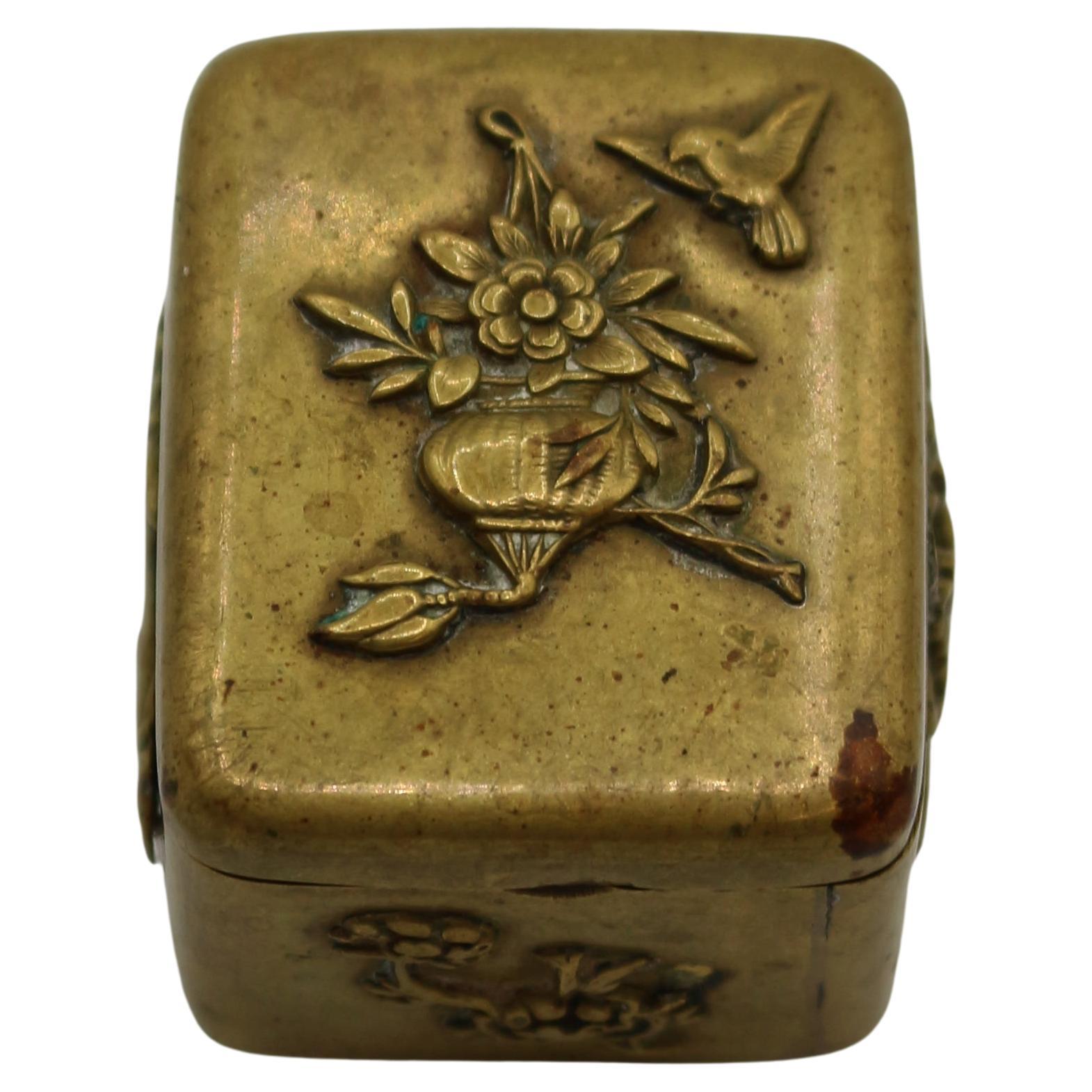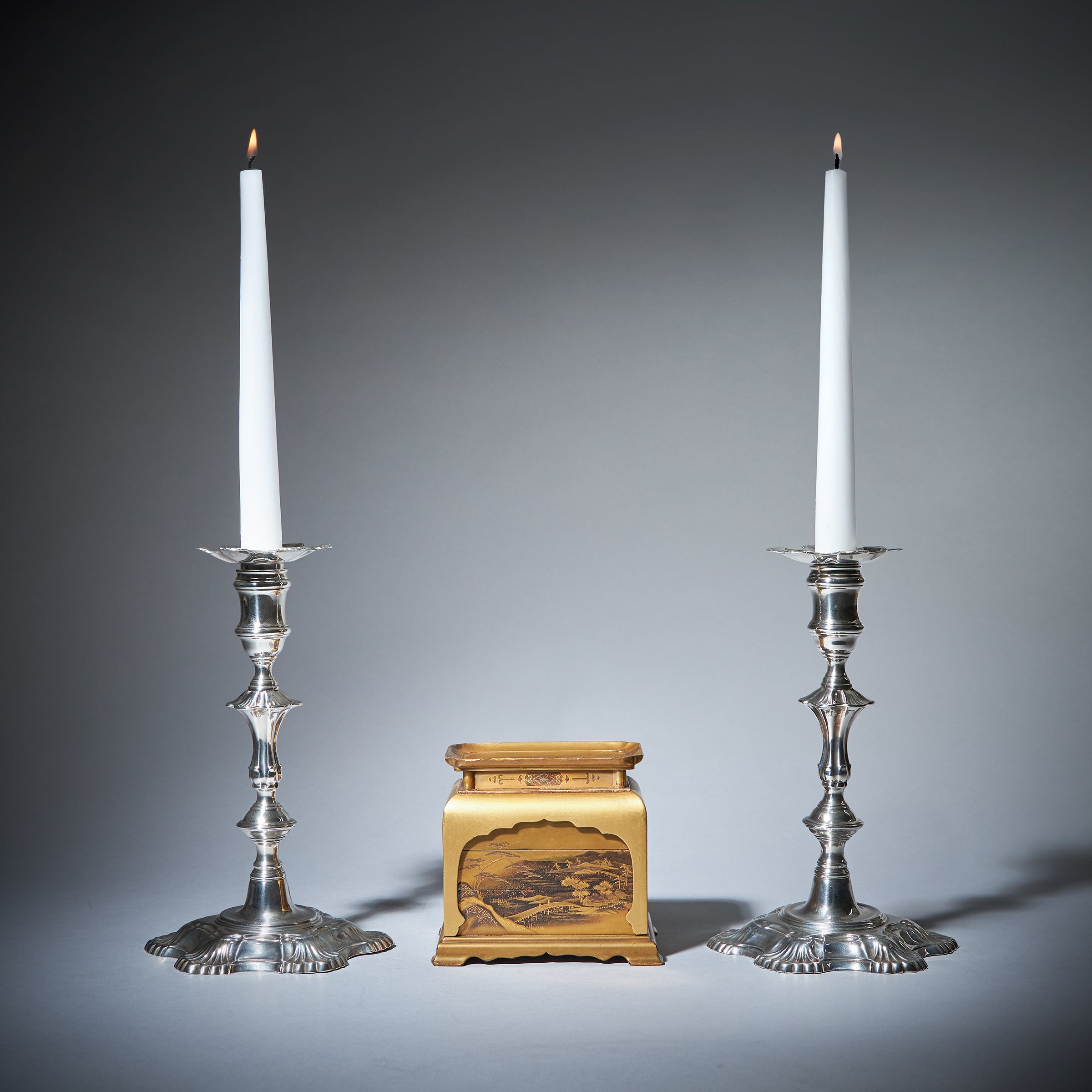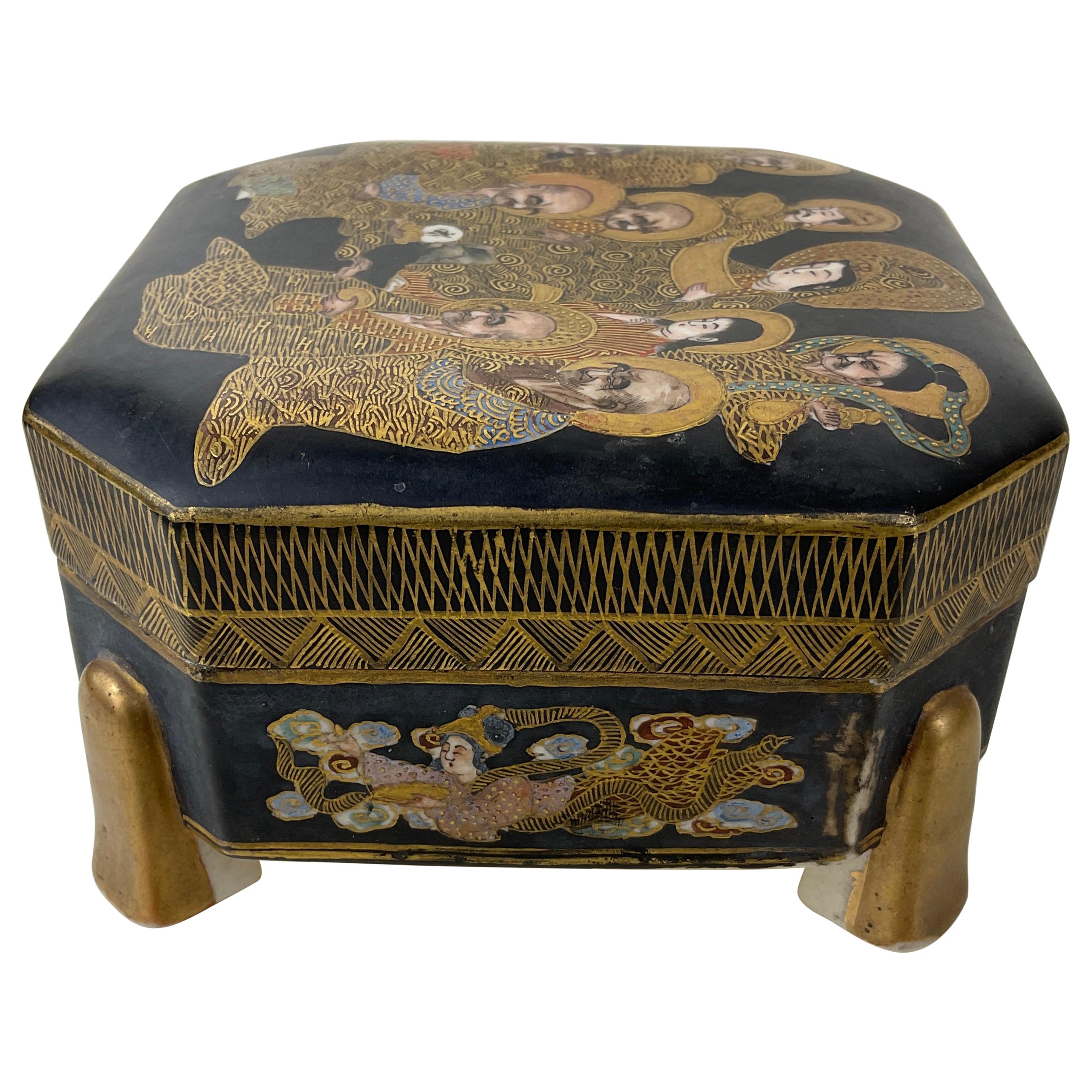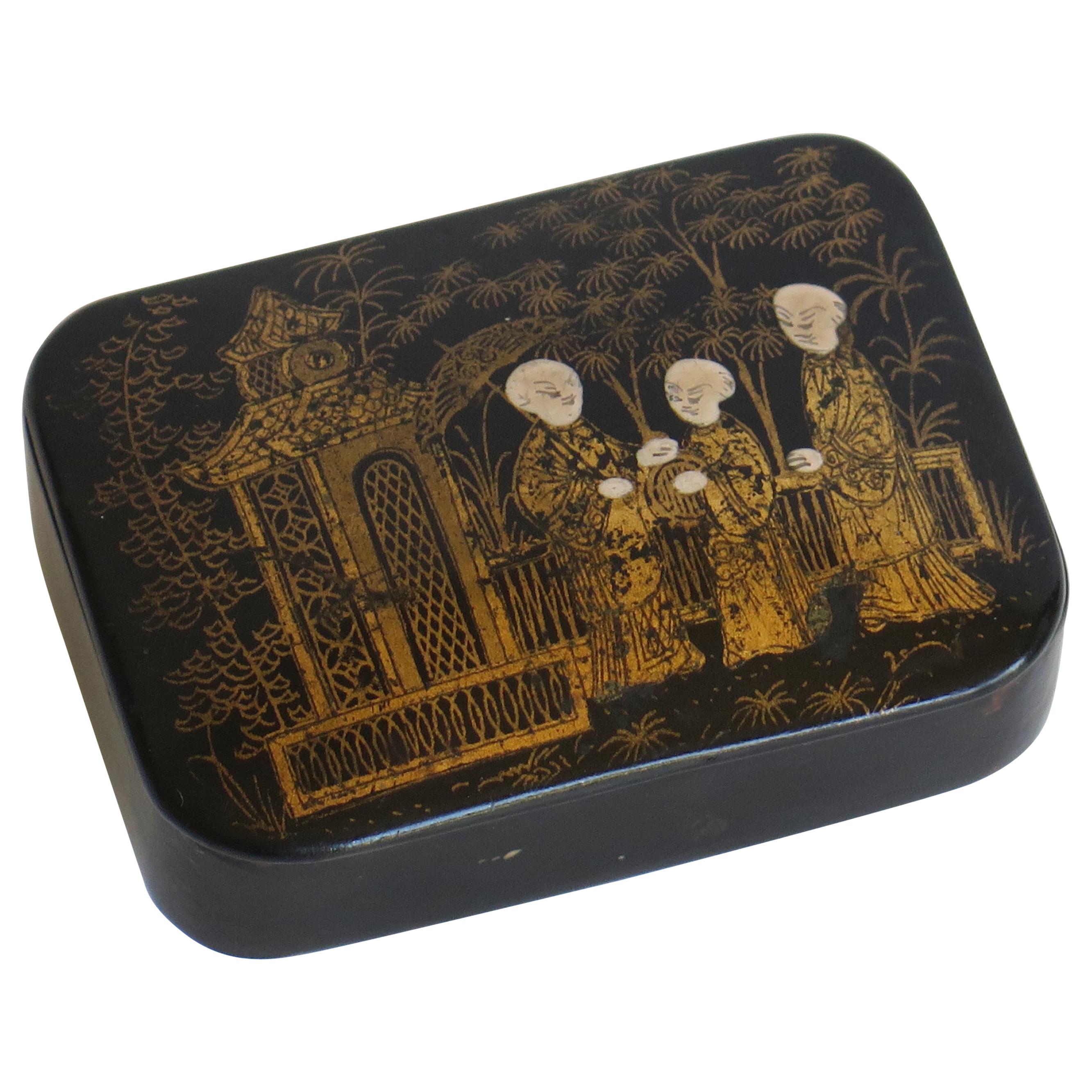Items Similar to 19th Century Japanese Meiji Period Parquetry Table Top Kodansu Cabinet
Want more images or videos?
Request additional images or videos from the seller
1 of 7
19th Century Japanese Meiji Period Parquetry Table Top Kodansu Cabinet
About the Item
19th Century Japanese Meiji Period Parquetry Table Top Kodansu Cabinet With An Arrangement of Seven Drawers & Metal Handles & Finishings
- Dimensions:Height: 9.45 in (24 cm)Width: 11.82 in (30 cm)Depth: 7.88 in (20 cm)
- Style:Meiji (Of the Period)
- Materials and Techniques:
- Place of Origin:
- Period:
- Date of Manufacture:1870's
- Condition:Minor losses. Minor fading. Item has surface wear and warm lived-in patina throughout in keeping with age and use.
- Seller Location:High Wycombe, GB
- Reference Number:
About the Seller
5.0
Platinum Seller
These expertly vetted sellers are 1stDibs' most experienced sellers and are rated highest by our customers.
Established in 2016
1stDibs seller since 2023
53 sales on 1stDibs
Typical response time: <1 hour
- ShippingRetrieving quote...Ships From: High Wycombe, United Kingdom
- Return PolicyA return for this item may be initiated within 14 days of delivery.
More From This SellerView All
- Early 19th Century Regency Period Flame Mahogany Tea Caddy BoxLocated in High Wycombe, GBRegency period early 19th century flame mahogany tea caddy box with swing handle complete with an original hallmarked sterling silver George III tea caddy spoon Comes with working key, item opens to reveal a fitted interior with twin caddies & central crystal mixing bowl which is a later addition. A tea caddy is a box, jar, canister, or other receptacle used to store tea. When first introduced to Europe from Asia, tea was extremely expensive, and kept under lock and key. The containers used were often expensive and decorative, to fit in with the rest of a drawing-room or other reception room. Hot water was carried up from the kitchen, and the tea made by the mistress of the house, or under her supervision. As the use of the jar waned and the box became more popular, the provision of different receptacles for green and black tea...Category
Antique 19th Century British Regency Tea Caddies
MaterialsSterling Silver, Brass
- 19th Century Rosewood and Brass Bound Grooming Box With Internal MirrorLocated in High Wycombe, GB19th Century Rosewood and Brass Bound Mens Grooming Box With Internal Mirror and Drawer. Inscribed CDB to brass front mount. No keyCategory
Antique 19th Century British Late Victorian Decorative Boxes
MaterialsGlass, Mirror, Rosewood
- 19th Century Burr Walnut Handcrafted Exquisite Writing Slope with Brass InlayLocated in High Wycombe, GB19th Century Burr Walnut Handcrafted Exquisite Writing Slope With Brass Inlay A handcrafted exquisite writing slope with tooled leather fitted interior befit with a glass inkwell Would make an ideal gift for the writing enthusiast. Item will include pad, quill (modern) and stand and inkwell. Antique lap desks...Category
Antique 19th Century British Campaign Desk Sets
MaterialsBrass
- 19th Century Moorish Tortoiseshell and Bone Blue Velvet Lined Trinket BoxLocated in High Wycombe, GB19th Century Moorish Tortoiseshell and Bone Trinket Box, Lined with Blue Velvet. Ideal for jewellery or keepsakes or just as a decorative desk item.Category
Antique Mid-19th Century Moroccan Anglo-Indian Decorative Boxes
MaterialsBone, Tortoise Shell
- 19th Century Mahogany Writing Slope Befit with a Pair of Inkwells by J J MechiLocated in High Wycombe, GBExquisite craftsmanship from the early 19th century a Mahogany writing slope befit with A black velvet interior & A pair of glass inkwells by J J Mechi of No 4, Leadenhall Street, City of London, circa 1830s Would make an ideal gift for the writing enthusiast or London historian. Item has lever action hidden compartment. Has an oval front brass plaque ideal for engraving a message if the item is a gift. Comes with the original heavy metal topped inkwells and notepad, modern quill and stand.Other items are shown for illustrative purposes. Alderman John Joseph Mechi (1802–1880) was a silversmith, banker, inventor and Alderman of the City of London. He experimented with new farming methods on his estate at Tiptree in Essex. Mechi was born in London 22 May 1802, the third son of Giacomo Mechi, a citizen of Bologna, who had settled in England early in life, was naturalised, and obtained a post at Kensington Palace in the household of George III. His mother was Elizabeth, daughter of J. Beyer of Poland Street, London. John at the age of sixteen was placed as a clerk in a house in Walbrook, trading with Newfoundland, a job he had for ten years. In 1828 he set up on his own account as a cutler in a small workshop at 130 Leadenhall Street, from where he removed to No. 4 in the same street in 1830. Between 1830 and 1840 he made his fortune through the 'magic razor strop' which bears his name After the Crimean war and a fashion for beards, sales declined. On 10 November 1840 he took out a patent for 'improvements in apparatus to be applied to lamps in order to carry off heat and the products of consumption'. This was for the external shop-window lamps...Category
Antique 19th Century British Campaign Desk Sets
MaterialsBrass
- 19th Century French, Louis XVI Kingwood Marble Top Chest of Drawers, CabinetLocated in High Wycombe, GBAn Elegant 19th Century French Empire Louis XVI Kingwood Marble Top Chest of Drawers, Cabinet. 5 Short Drawers Inlaid With Entwined Leaves, Brass Ring Handles And Ormolu Mounts. In...Category
Antique 19th Century French Louis XVI Commodes and Chests of Drawers
MaterialsMarble, Brass
You May Also Like
- Japanese Cloisonne Box, Meiji Period, Late 19th Century, JapanLocated in Austin, TXA very fine and intricately decorated Japanese cloisonné box and cover, Meiji period, late 19th century, Japan. The lidded trinket or jewelry...Category
Antique 1890s Japanese Meiji Metalwork
MaterialsBrass, Copper, Enamel
- Mid-19th Century Japanese Meiji Period Bronze Stamp BoxLocated in Chapel Hill, NCMid-19th century Japanese Meiji period bronze stamp box. Applied castings of a hanging flower basket with bird, recumbent stag and flowers. Measures: 1 1/...Category
Antique Mid-19th Century Japanese Meiji Decorative Boxes
MaterialsBronze
- Signed Mid 19th C. Edo/Meiji Period Miniature Lacquer Stacking Cabinet, JapanLocated in Oxfordshire, United KingdomThe highly decorated tray in the form of a table frames a series of three stacking boxes, a further three lidded boxes and a tray concealed within, raised on ogee bracket feet. This...Category
Antique 19th Century Japanese Meiji Lacquer
MaterialsLacquer
- 19th Century Japanese Satsuma Lidded Box, MeijiLocated in Miami, FLMeticulously enamelled and gilt satsuma box. Overall very good antique condition, base that the box sits on is a bit slanted. Lid perfect, box some w...Category
Antique 19th Century Japanese Meiji Decorative Boxes
MaterialsPorcelain
- Small Japanese Lacquer Duck Incense Box, Kogo, Meiji Period, Late 19th CenturyLocated in Austin, TXAn exquisite Japanese Meiji Period small lacquer incense box, kogo, in the form of a duck or goose, late 19th century, Japan. The delicate lacquer box, known as a kogo in Japanese, ...Category
Antique Late 19th Century Japanese Meiji Lacquer
MaterialsLacquer
- Japanese Laquered Box with Hinged Lid hand painted, 19th Century Meiji PeriodLocated in Lincoln, LincolnshireThis is a good papier mâché, rectangular shaped black lacquered lidded box, hand enamelled and gilded, made in Japan during the 19th century, early Meiji period. This rectangular shaped papier mâché box has a well fitting hinged lid, with the box base and lid slightly domed. The box was probably originally made as a pocket box but could easily sit on a desk or dressing table as required. This is a very decorative box with finely hand painted scenes of three people, one holding a parasol, in a garden setting, with a pagoda type building, large gate...Category
Antique 19th Century Japanese Meiji Lacquer
MaterialsPaper
Recently Viewed
View AllMore Ways To Browse
Antique Japanned Copper
Papier Mache Boxes
Antique Box Silver Inlaid
Horn Box Small
Asprey Guilloche
Vw Antique
Straw Zebra Box
Fortnum Hamper
Incolay Box
Kpm Jewel
Limoges Lipstick
Liquid Soap Dispenser
Paper Mache Hand Painted Egg
Papier Mache Spectacle Case
Stub Pen
Vasily Makhalov
Vintage Schweppes Crate
Vintage Metal Jewelry Trinket Box





